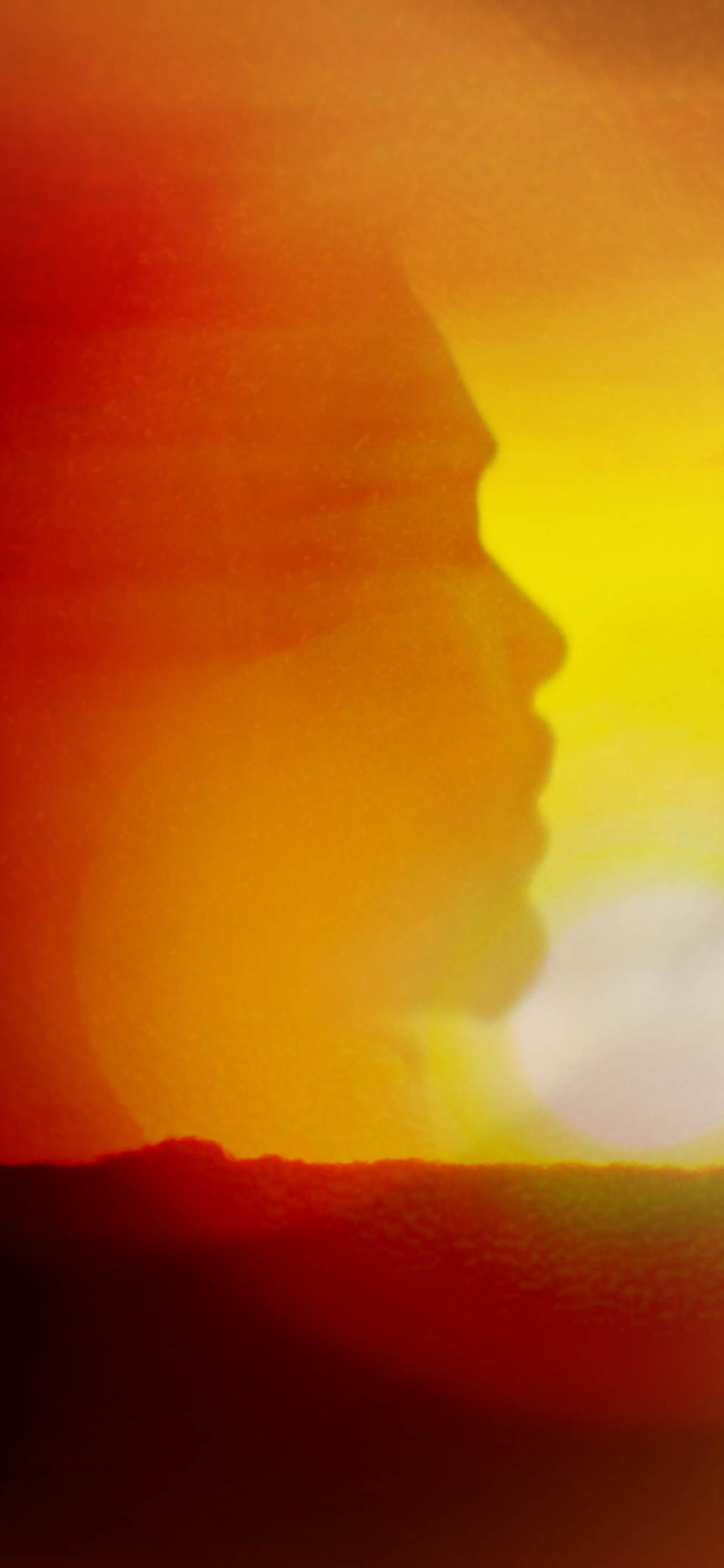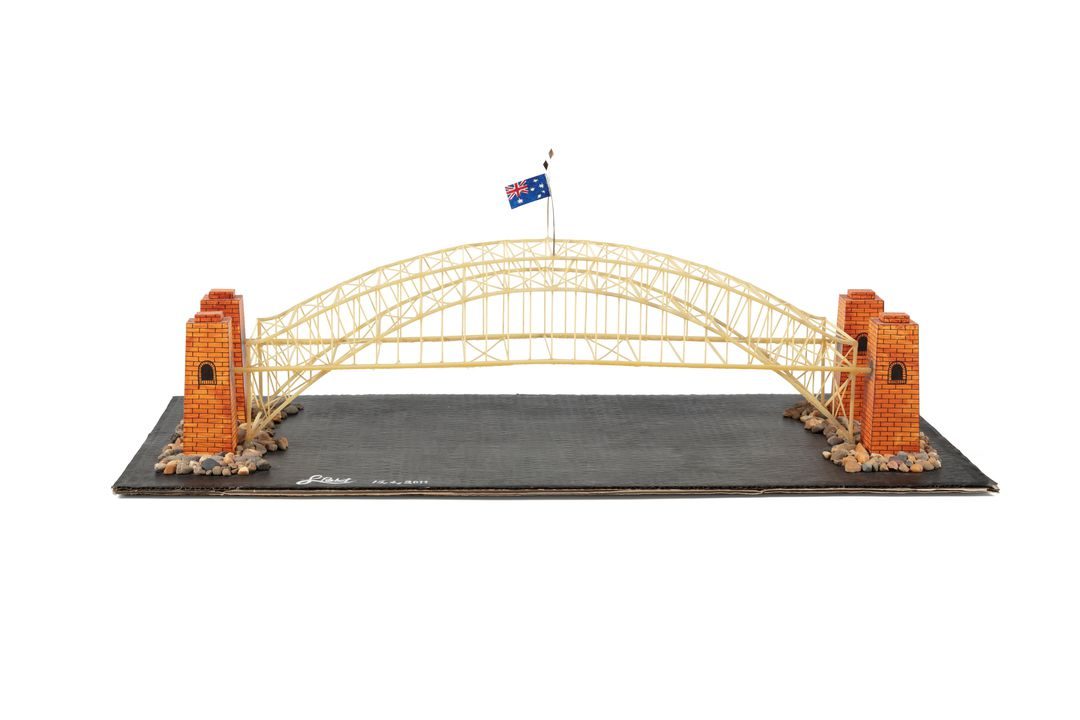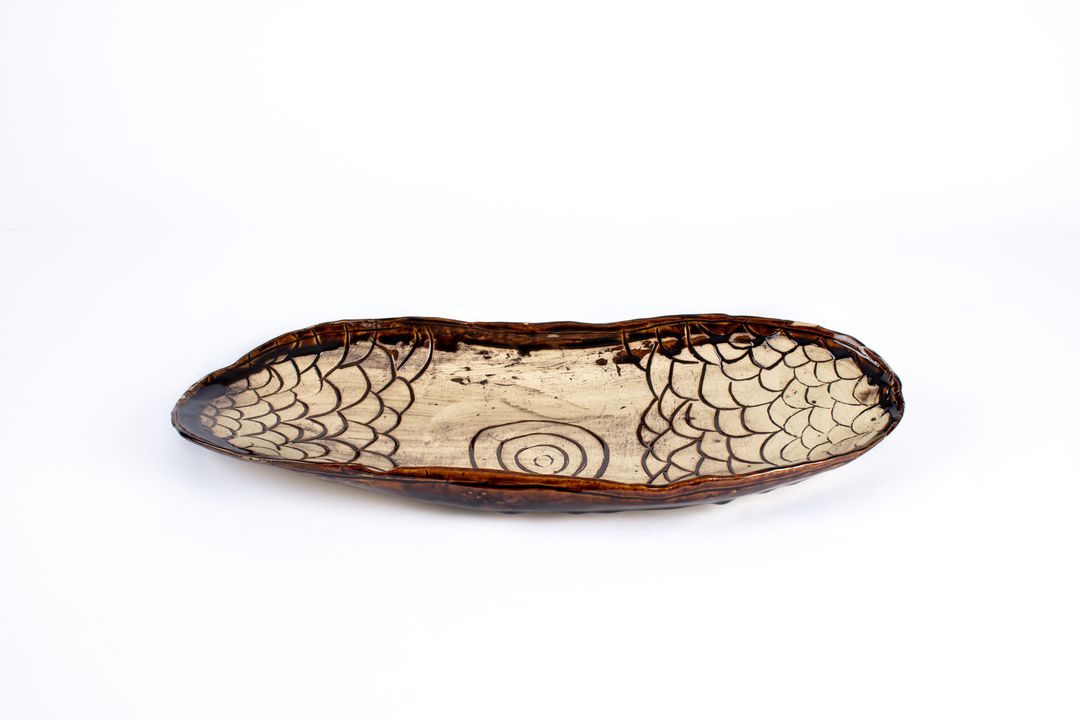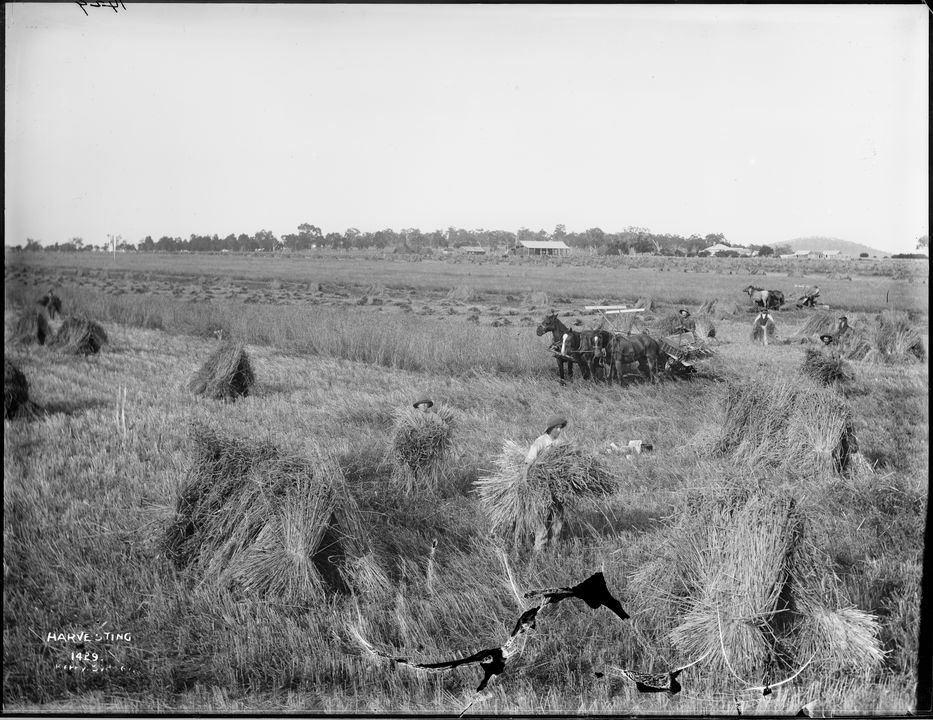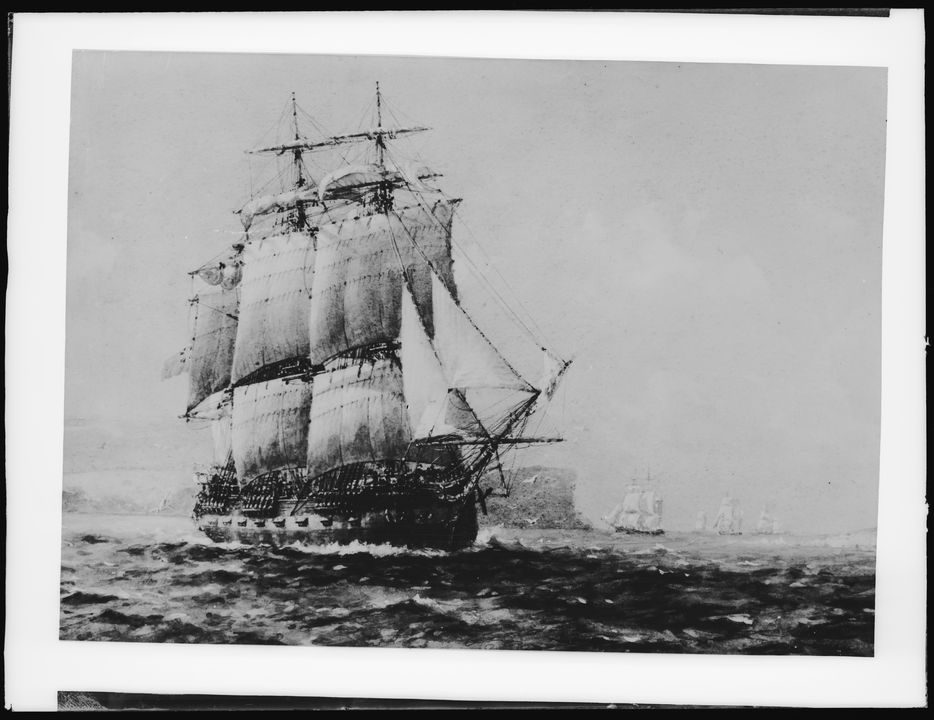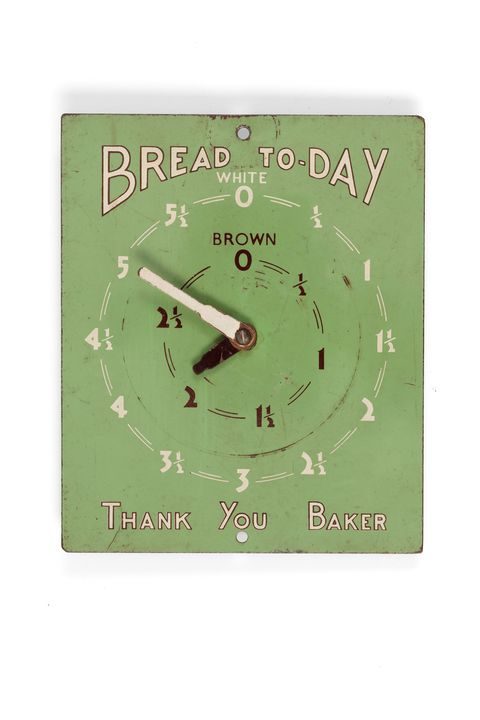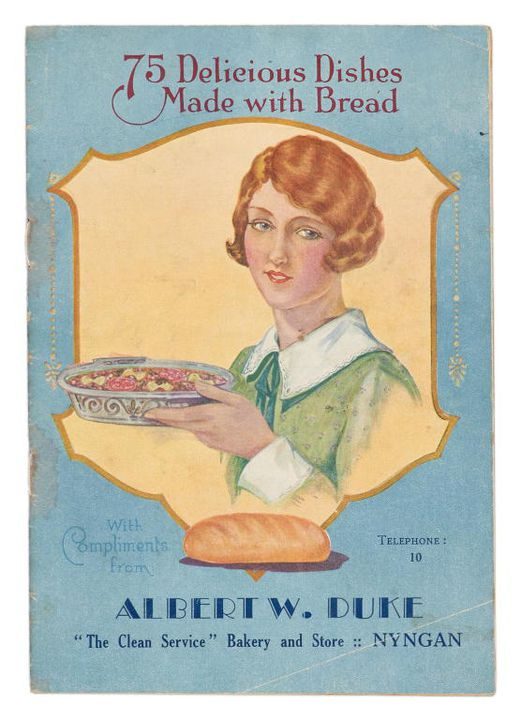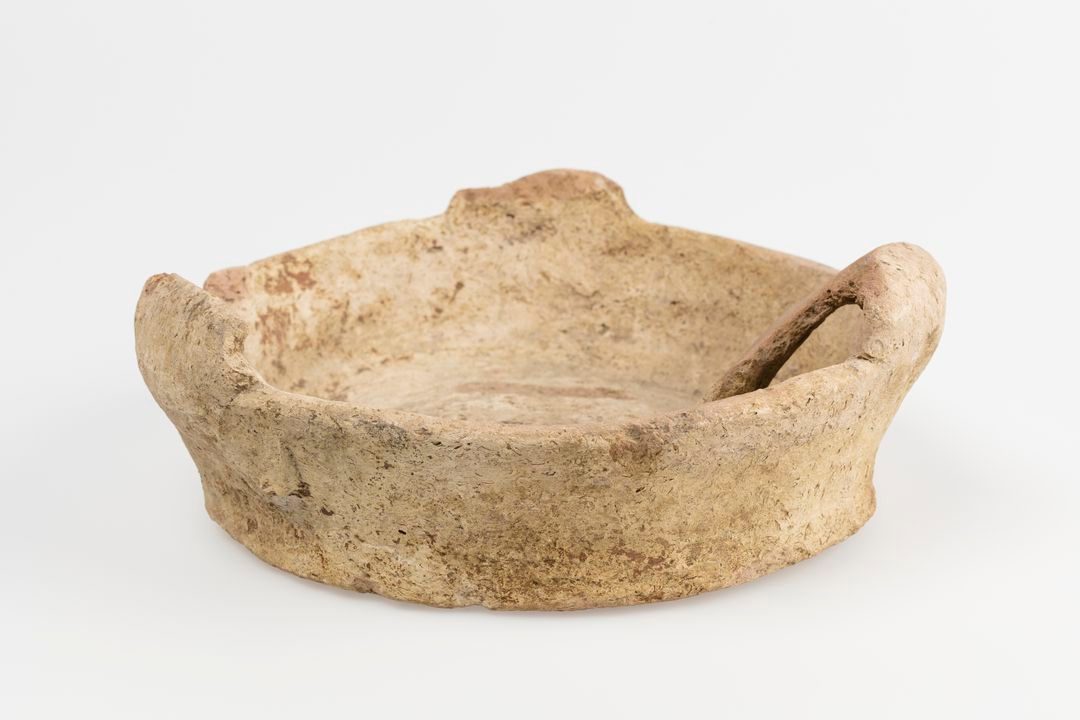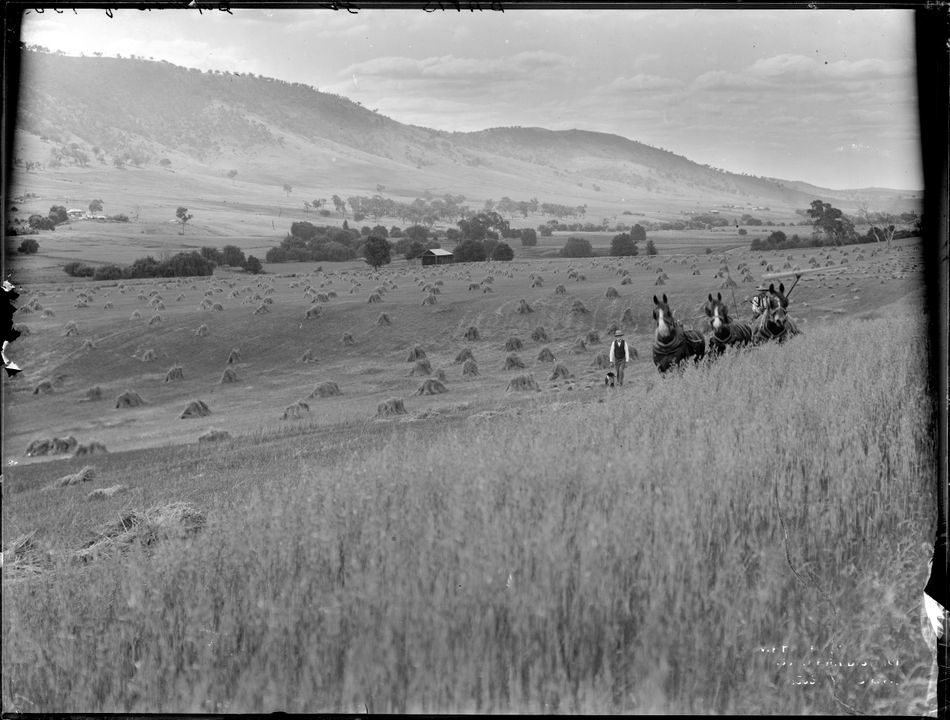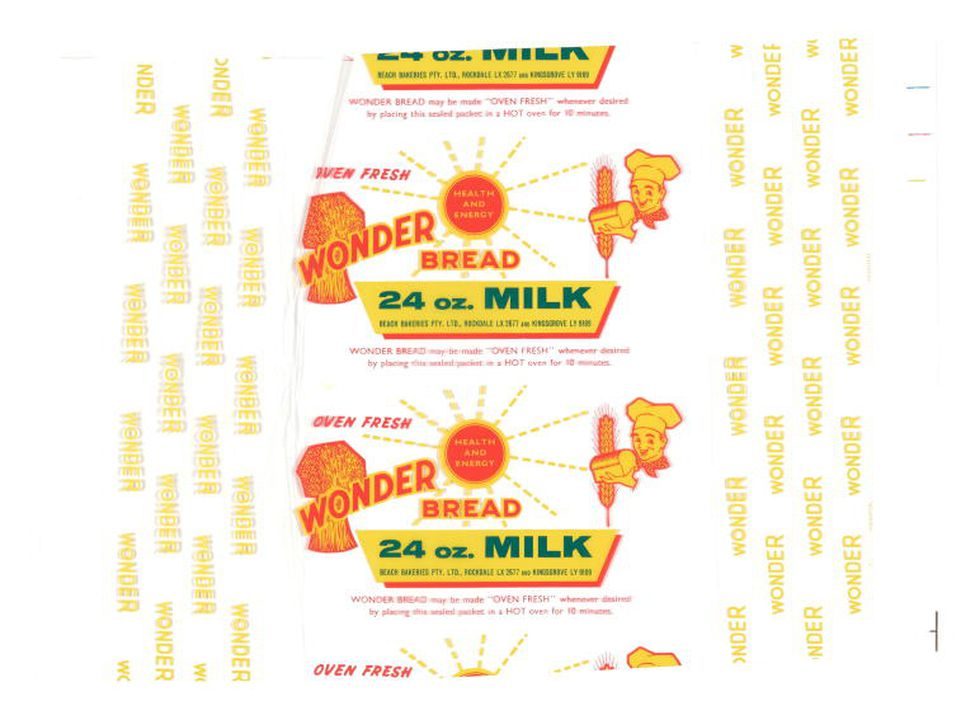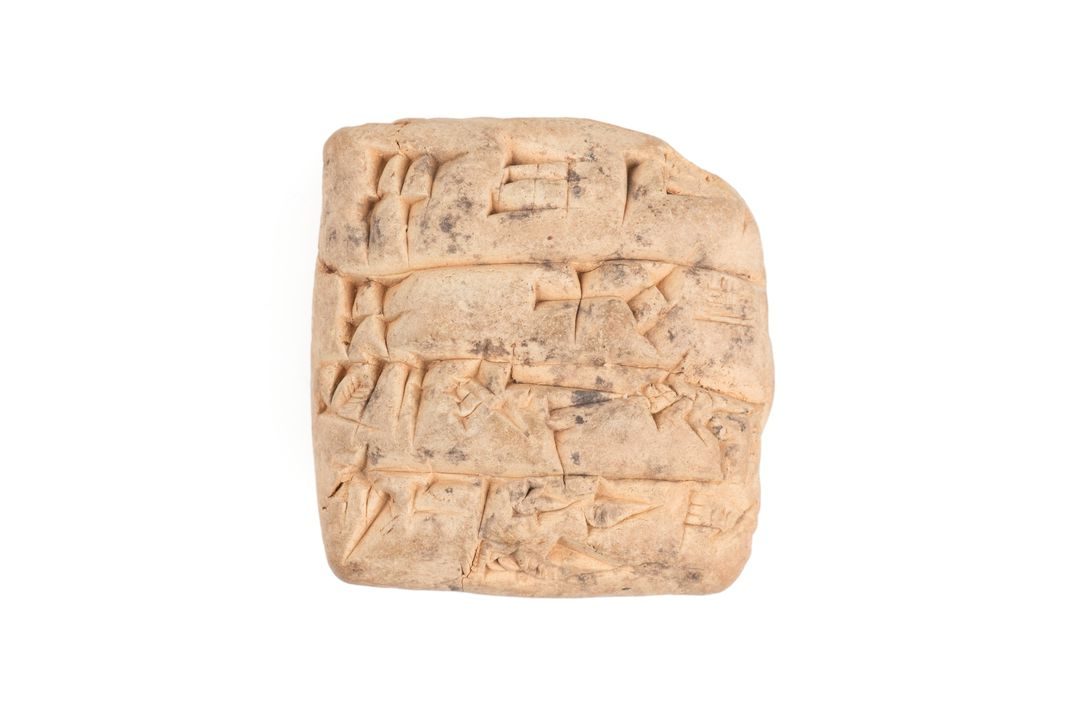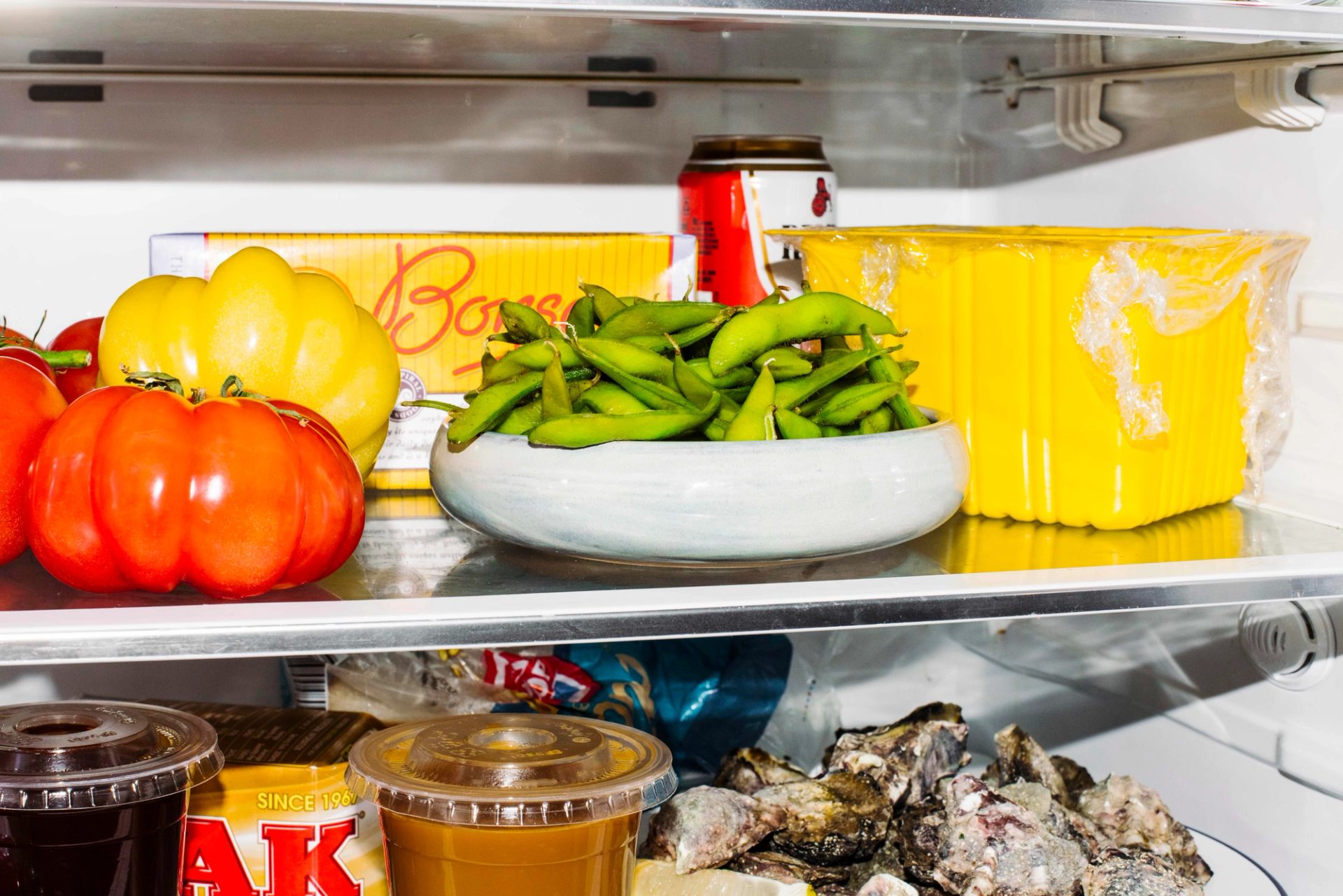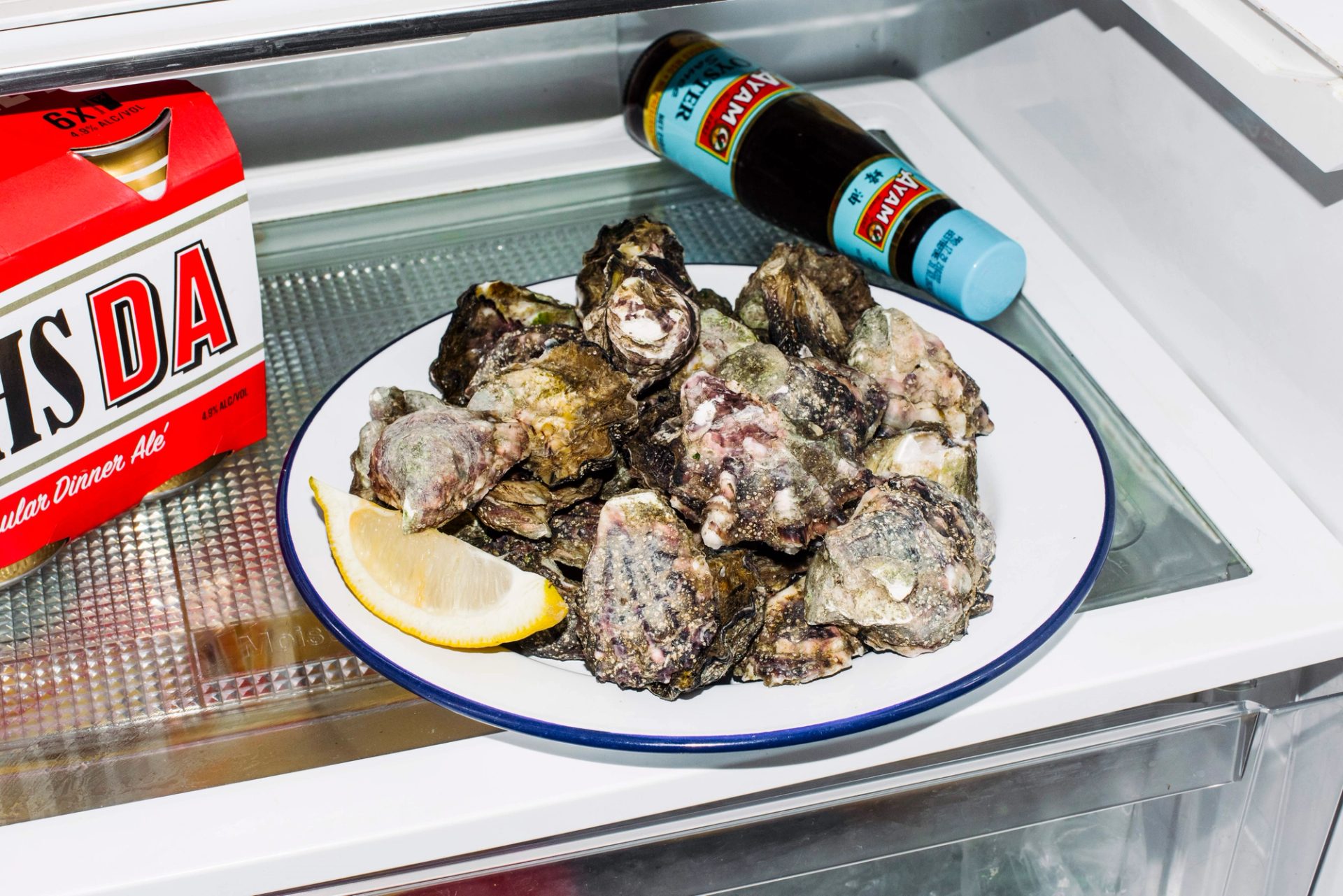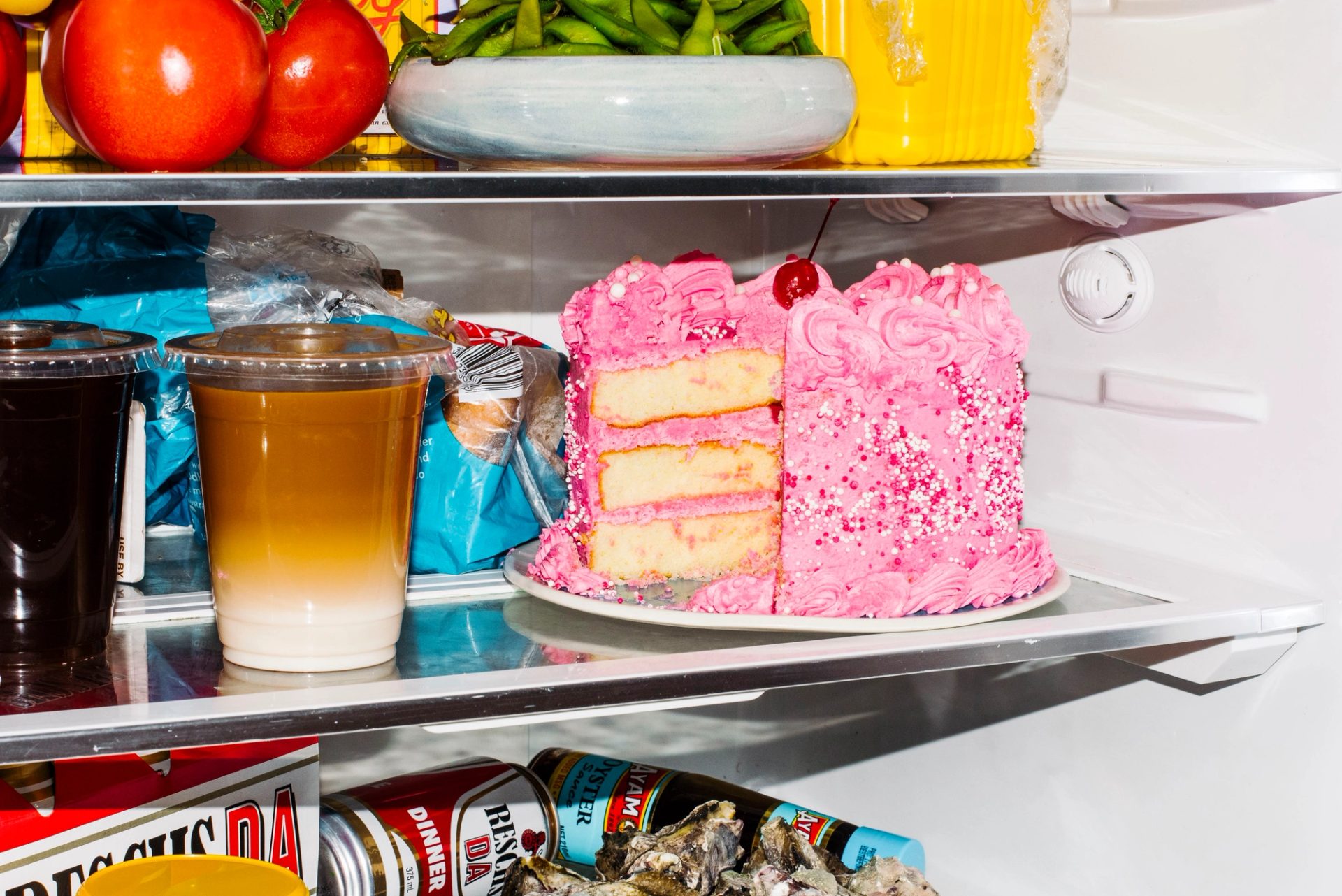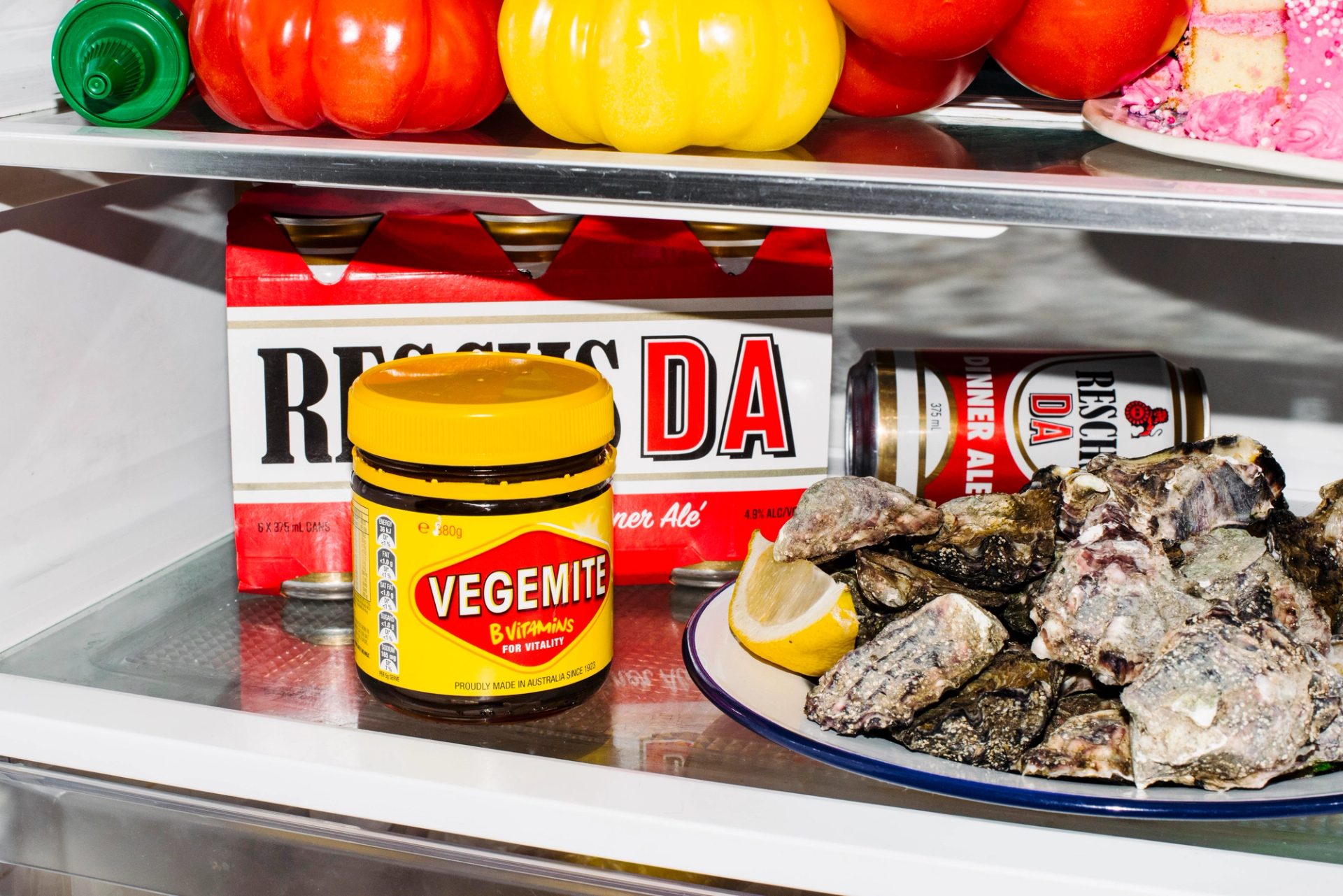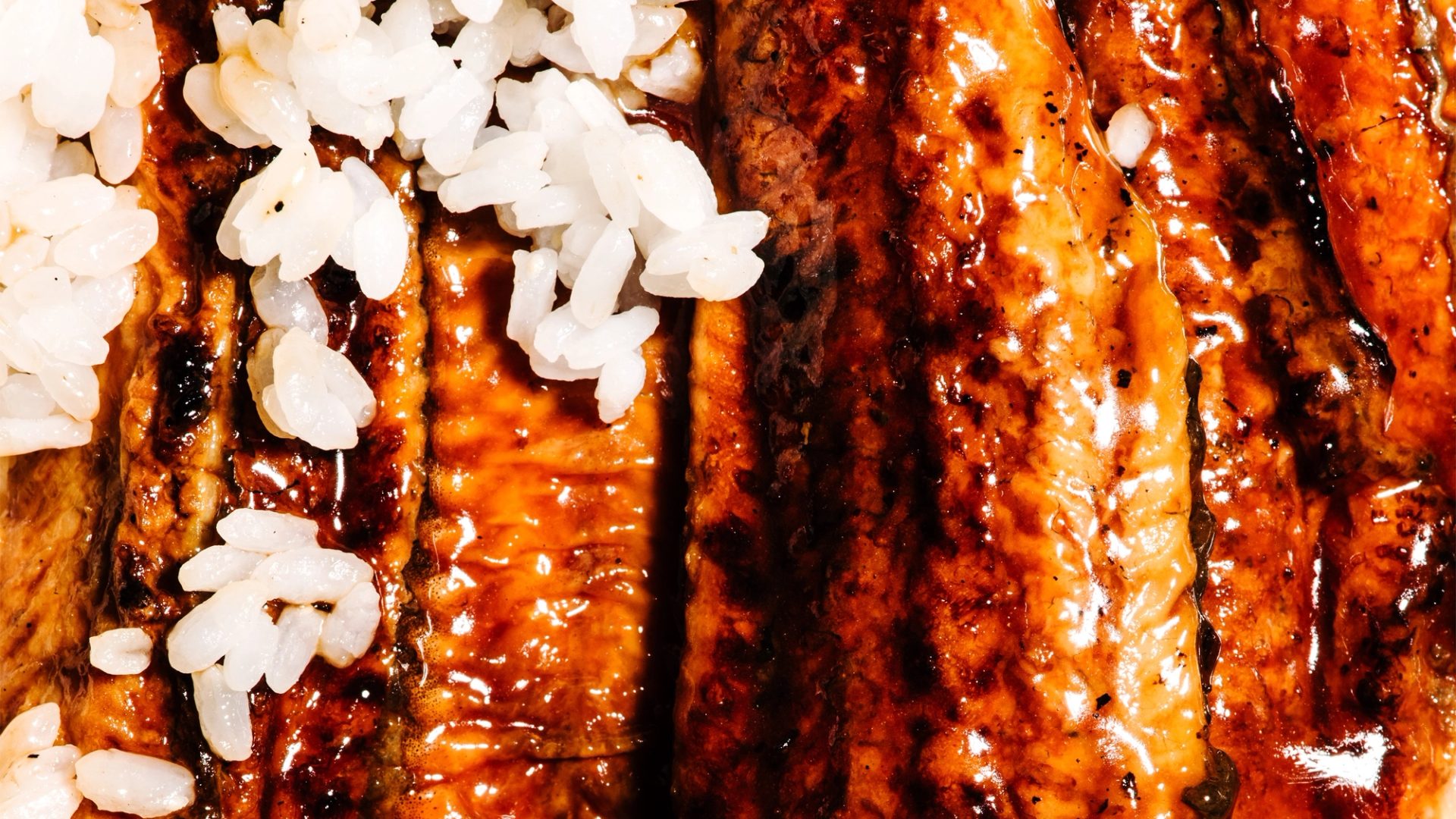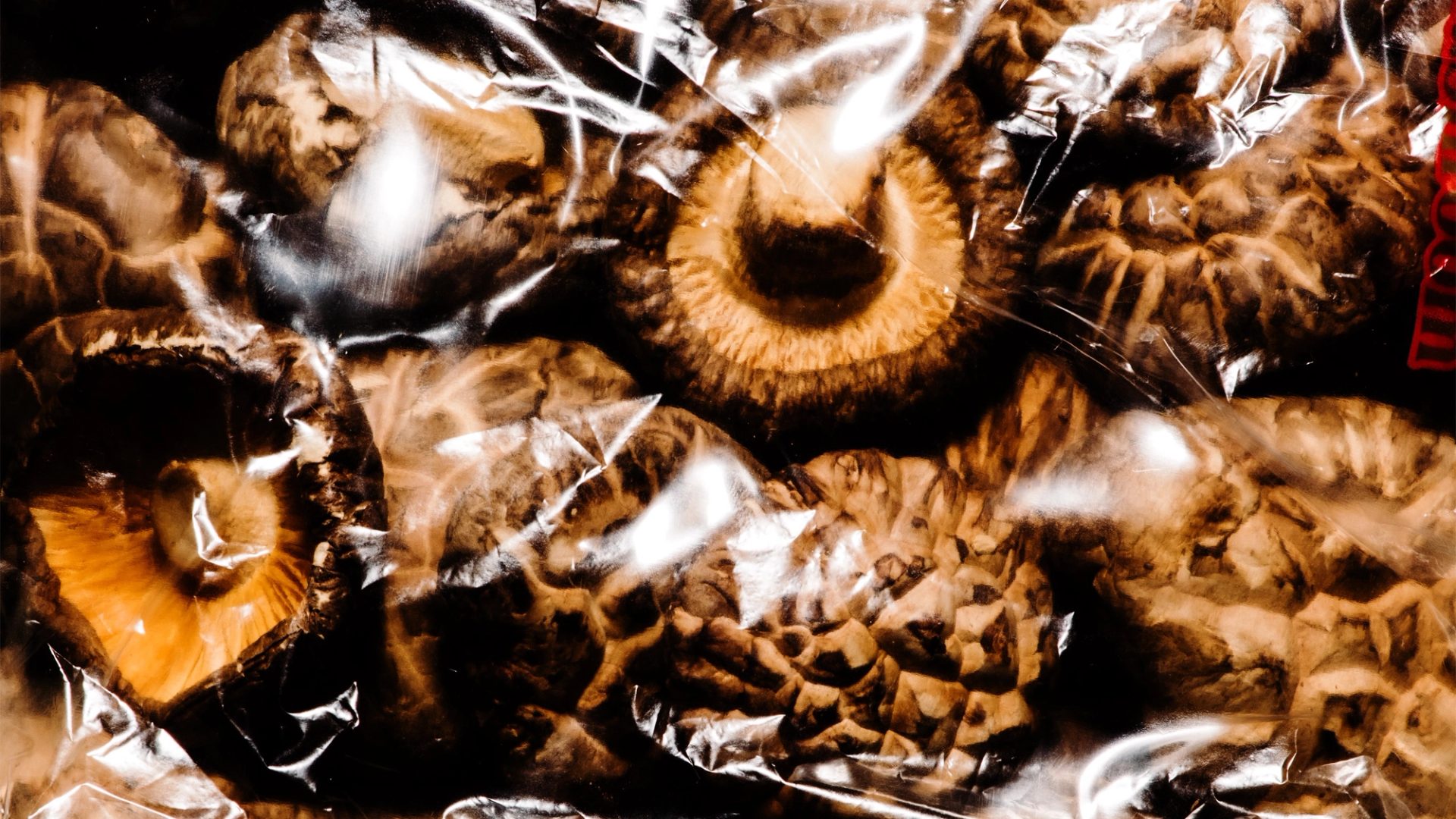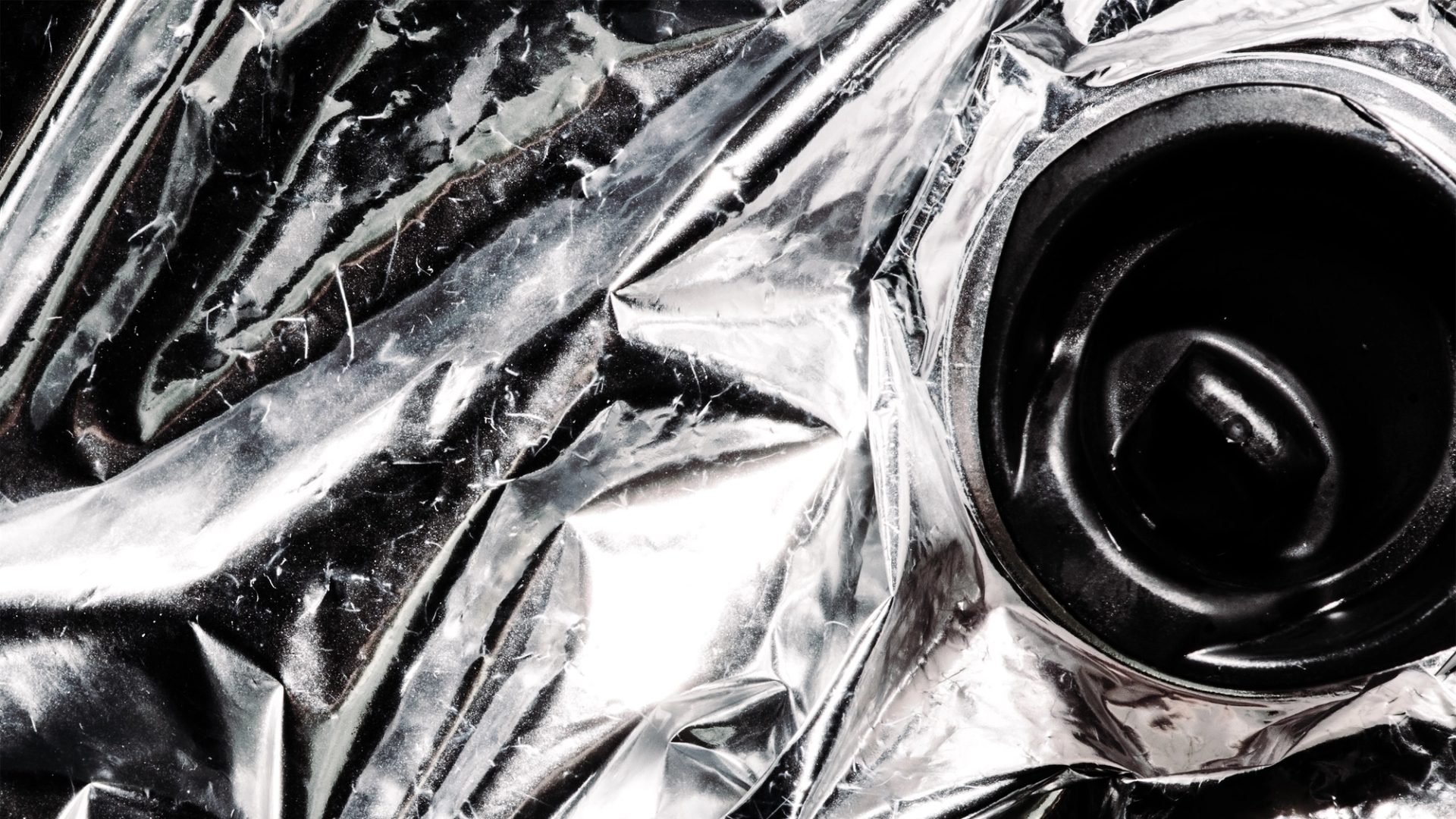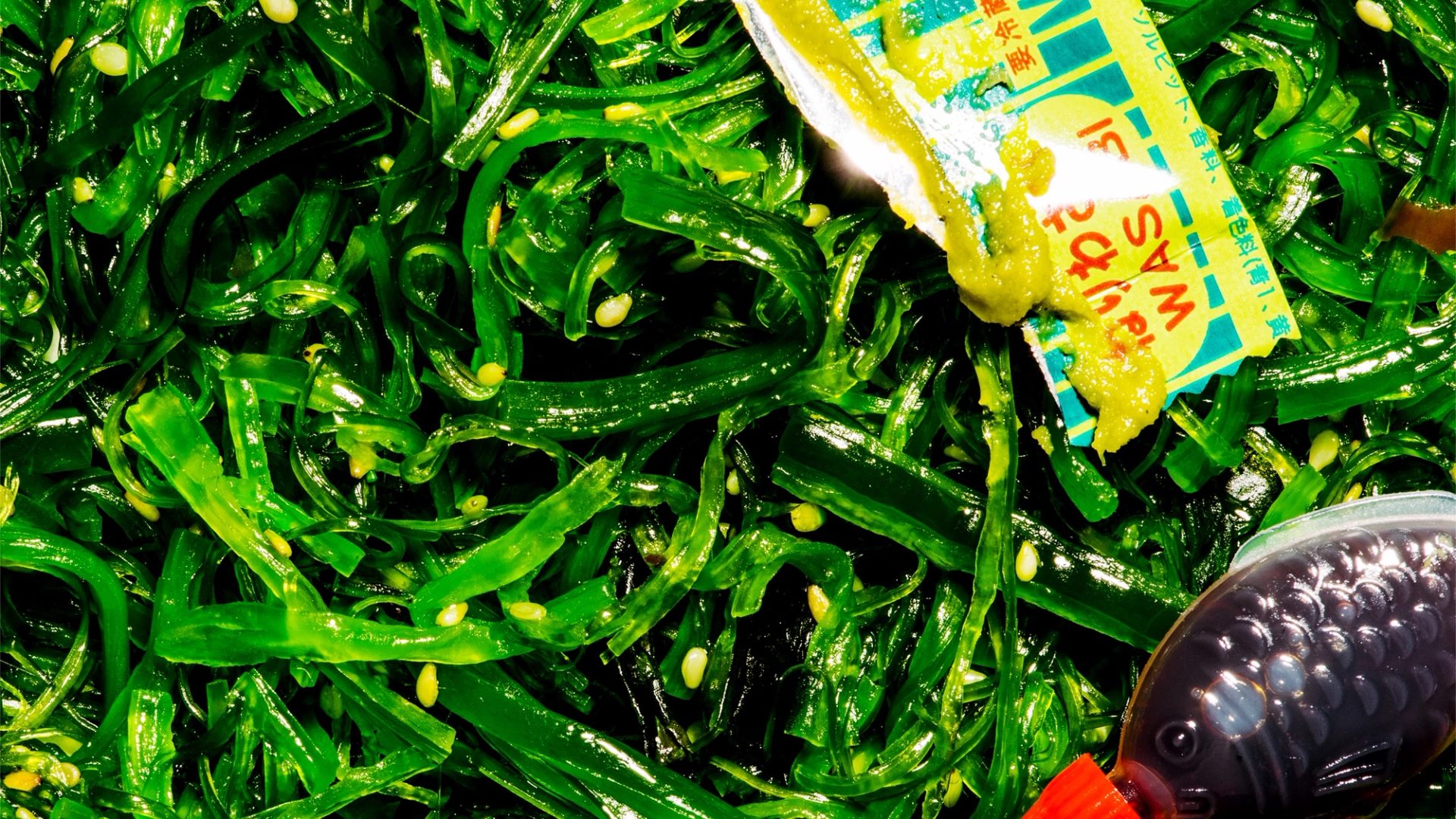Grains

Culinary Archive Podcast
A series from the Powerhouse with food journalist Lee Tran Lam exploring Australia’s foodways: from First Nations food knowledge to new interpretations of museum collection objects, scientific innovation, migration, and the diversity of Australian food.
Grains
Long before local authorities tried to ban sliced bread, Australia was home to the world’s first bakers. Grindstones, some 65,000 years old, suggest Indigenous communities have been baking for millennia and there’s an amazing effort to bring back this cultural knowledge. While Australia has had a fraught relationship with locally grown wheat, today’s chefs are embracing Australian heritage grains, knead our enduring flour into ultra-local pasta, pizza and bread.
‘These native grains are like gold. Some of the species are just absolutely phenomenal. The taste is like being wrapped in a warm blanket.’
Transcript
Lee Tran Lam The Powerhouse acknowledges the Traditional Custodians of the ancestral homelands upon which our museums are situated. We pay respects to Elders, past and present and recognise their continuous connection to Country. This episode was recorded on Gadigal, Kamilaroi, Bundjalung and Wurundjeri Country.
My name is Lee Tran Lam and you’re listening to the Culinary Archive Podcast, a series from the Powerhouse. The Powerhouse has over half a million objects in its collection; from a First Nation's grindstone for making flour; to a Sydney Harbour Bridge model created from spaghetti by an Iranian refugee in Australian detention; and a half loaf trade token from around the 1930s, the collection charts our evolving connection to food.
The museum's culinary archive is the first nationwide project to collect the vital histories of people in the food industry, such as chefs, producers, writers, and restaurant owners who've helped shape Australia's taste and appetites. Today, we are talking about Grains.
Jacob Birch These native grains are like gold. Some of the species are just absolutely phenomenal. The tastes - it's like been wrapped in a warm blanket.
Paul Farag I was like, hey, I'm working in a Middle Eastern restaurant making Middle Eastern bread. Why not use a Middle Eastern flour?
Paul van Reyk The early Vietnamese refugees, who bring their version of French loaves, and the Vietnamese pork roll becomes the new iconic Australian dish.
Bernadette Duncan I've noticed with my own dad, when I make the native grain spread for him, his behaviour is different. His mind is better, and it is overall healing for him. I could see that difference myself.
LTL Long before local authorities tried to ban sliced bread Australia was home to the world's first bakers. Ancient grindstones, including one with 65,000 years of history, suggest Indigenous communities have been baking for millennia. There's an amazing effort to bring back this cultural knowledge and restore Indigenous grains.
While Australia has had a fraught relationship with locally grown wheat, there's a growing movement to embrace Australian heritage grains backed by open-minded chefs who want to knead such flour into ultra-local pasta, pizza and bread.
JB My name's Jacob Birch. I'm a Kamilaroi mari. We don't really often acknowledge that baking in Australia has been going on for probably 30-60,000 years. You know, we've got urban ovens that would've acted as the first baking ovens that are 40,000 years old, starch deposits on grinding grooves, cereal grains embedded in the geological timeline, fully intact cereal grains like native rice going back almost 30,000 years. We had these massive grain-based economies. And some of my passion is to see these economies back up and running by First Nations people predominantly, for the benefit of First Nations people. And you look at these native grains, they've got really low carbs and really high protein levels, really good fatty acid profiles, really good mineral profiles. Some of them are twice the amount of calcium than what you would get in the same serving of full cream cow’s milk.
Sharon Winsor Baking and making breads has been part of our culture and history for 60,000 years or more. So, using grinding dishes and stones to ground up seeds like bottle seeds and different native nuts as well, and also grains from native grass to make flour and then bake bread as well. So that was just part of everyday life for our ancestors. And one of the reasons people have found these grinding stones and dishes across various parts of the country is that they were always left and weren't taken with people on their travels and their journeys from one area to another. So, things were left, and then new grinding dishes and things were implemented in different areas. So, there's endless amounts of proof that our people were using those methods for many thousands of years.
LTL That's Sharon Winsor, a Ngemba Weilwan woman who also appears in our episodes about Coffee and Tomato. Through her Indigiearth and Warakirri businesses, she infuses lattes with wattle seed and serves bush tomato quiches, but she’s also a director at Black Duck Foods, an Indigenous-led social enterprise founded by Bruce Pascoe, the Yuin, Bunurong and Tasmanian man behind the award-winning bestseller Dark Emu. His conversation-changing book sparked many revelations, including the possibility that Aboriginal Australians might be the world’s first bakers. There's a grindstone in Cuddie Springs NSW that’s 36,000 years old – which means Ngemba women were grinding seeds to make flour about 18,000 years before Ancient Egyptians were turning mushed-up plants into bread. When Bruce Pascoe was finishing Dark Emu, an even older grindstone was discovered around Kakadu, and the wear on the stone suggested Indigenous Australians were producing flour about 65,000 years ago.
Reviving this custom of baking bread with native ingredients is something Bruce Pascoe is doing with Black Duck Foods. In 2020, he took sheds full of Mandadyan Nalluk – Yuin for dancing grass – and carried out its first harvest in two centuries in order to bake a dark lifestyle bread that hits you with its one-of-a-kind fragrance.
Black Duck's work supports First Nations communities, which is significant as representation of Indigenous people in the bush foods industry has been as low as less than 1 per cent. Native grains can have a great economic impact for Aboriginal Australians, but their power to revive cultural knowledge is significant too.
BD My name is Bernadette Duncan. I live in a small community on the New South Wales, Queensland border, inland on the Macintyre River. I'm an Elder, local Indigenous Elder. I'm also a part of the Garragal Women's Language and Culture Network, and that involves talking to women about Indigenous plants and animals and encouraging them to write stories to connect these plants and animals to Country. The Atlas of Living Australia is an online database and it's been visited by millions of people. Dr Angela Patterson from the Grains Research Institute, Narrabri contacted me and asked if I wanted to be involved and attend a workshop. The first one was in Narrabri with Bruce Pascoe. So that opened my eyes up to a lot of different things we could be looking at in terms of going back to our traditional food and medicine.
BD Our people stopped using native grains because we grew up on a mission. So, a lot of the practices were forbidden. When I went to the Grains Research Institute, the workshop with Angela, I realised that I'd only heard of one grain when I grew up and that was nardoo, that grows in the swamp. And I heard people talk about nardoo damper when I was little, when I was growing up on the mission, but that was the only grain.
Nardoo is something that I know the old people will remember, and we start to talk about nardoo and they get excited. I'm hoping now from that rediscovering, the nardoo will jog their memories about other seeds. And there's not a lot of Elders left in our small community either. So, a lot of our knowledge is already gone.
LTL In order to restore and expand on that knowledge, Bernadette Duncan and Gomeroi woman Kerrie Saunders from the Narrabri Plant Breeding Institute carefully inspected native grains as they took part in the Narrabri Harvest Gathering in February this year, as recorded here by our producer.
KS This one here requires not much threshing at all. You know, all it does need rubbing. And you know, like the old women used the coolamon, they put the seed – unless they got it off the stalk – they put it in the coolamons and just threw it up. And the wind blew the trash away, kept the seed. Yeah. All you need is a little off the stalks, and it just requires that little rubbing. Yeah. And see how you got the shiny seeds? Them shiny seeds are ready to chuck in the grinder for milling or flour.
BD When I went to the Grains Research Institute, the workshop with Angela, I found out that there was weeping grass, there was grass salt seeds that we make flour out of and damper, lomandra, there's kangaroo grass. There's that Mitchell grass and there's also little legumes. But as for growing up with native grains, we didn't have any of that knowledge. It was just all lost. Angela’s reintroduced me to grains that our old people would’ve used because they're growing everywhere, and they made into flour and they’re nutritious. But now there's science there to prove the nutrition in these seeds, a lot better and a lot healthier than bread on the shelves in Coles and Woolies today.
Archival Tip Top advertisement [Sung] Tip Top bread, as the baker said, is tip top in every way. Slice, wrap and peel to keep a fresh appeal, buy a loaf today. Tip Top bread, as the baker said, it is especially fine. Ask the [inaudible] or pop into a shop, where you see the Tip Top sign [applause].
LTL There are many items about wheat and bread making in the Powerhouse collection. There are models of wheat grains, a harvester that can salvage storm flattened crops and bread tokens that were popular around a century ago, particularly between the World Wars, when households faced some pretty tough budgeting. On payday, you'd buy your bread tokens, which you could use long after your wages had run out. You could exchange them for a whole or half loaf. Plus, leaving tokens out at night for a morning delivery of bread to your home seemed way less risky than leaving money to be collected outside. In the Powerhouse collection there's even a token for Tip Top, a name we associate with mass produced bread seen in today's supermarkets. So how did we end up with white bread ruling our diets?
AP My name's Dr Angela Pattison. I'm a researcher in grains, University of Sydney at the Narrabri campus, which is on Gomeroi Country. So, wheat is native to the Middle East. That's what they call the centre of origin. People found the wheat and they found that it made a decent product. They selected the plants over thousands of years that produced more and more grain per plant. As wheat became more and more popular it spread throughout the world. So, when European people, particularly the British, came to Australia, they brought the wheat crops with them that were adapted to Britain, which is cold and wet.
Archival Well, over in Australia where the sun shines rather more frequently than it does here, are the great fields of growing wheat. It is only the most carefully selected crops, which are earmarked for the long sea voyage to England.
PvR Part of the selling point for Australia was it was this country, which was unpopulated, so-called, where you could set up new places to grow wheat. When settlers are set out here, they're supposed to be able to survive for at least two years before they become self-sufficient. So, they bring wheat grains with them. They also bring some flour with them because you've gotta wait for the wheat to grow. Except the soil is rubbish. As we know it's sandstone, it lacks nutrients. The colony cannot grow its own wheat. It's dependent on flour and flour starts running out.
Archival When the first explorers came this way, 100-150 years ago, they found here an enormous river, great areas of water. And they thought, surely this was something like an inland sea. And they went away and reported what they'd found. A little later, a fisherman them came again to examine this bonanza. And what they found was this: either flooding, rain, or drought.
PvR By the end of the first year, Governor Phillip sends a ship, the Sirius, out to get more flour from the Cape of Good Hope. When it comes back, it's only got another four months' worth of flour. Eventually, as they move further inland, dispossessing Aboriginal people along the way, along the Hawkesbury River and the Paramount River, the soil becomes more fertile, and it can start growing wheat. And so, the colony starts to recover from that, but then you get these disastrous floods. This is the first example we know of the literature of the La Niña effect. So, the crop gets wiped out again. So again, they're back to depending on importer's flour. At least the ships now are coming quicker.
LTL That's Paul van Reyk, author of True to the Land: A History of Food in Australia. He also appears in our ‘Coffee’ episode and our brewer's yeast instalment about ‘Beer and Vegemite’. Here, he is talking about the beginning of commercial bread making in Australia.
PvR [The] first bakery was set up in 1788, the first public bakery. And what you would do was, you would grow a little bit of wheat, to the extent you could grow any, you would grind it using a hand grind mill, or a mortar and pestle. And you would take that to the baker who would then bake it. And in return you would get a loaf, depending on the quantity of wheat you brought. And the first example we have of a case of food alteration that was actually taken to law was where a woman was found to have mixed powdered stone – as much as 40 per cent of what she brought to the bakery was powdered stone.
LTL Having unwanted things turn up in your bread didn't end there. In the US, the Food and Drug Administration reckons that one rodent hair is permissible for every 50 grams of flour you buy. And ergot, a mould that can turn up in rye bread after damp growing conditions, it actually has a hallucinogenic effect. In fact, LSD is produced from ergot. There's a theory that ergot poisoning in bread led to the Salem witch trials in the 1600s. I dunno if Australian wheat crops have sparked any hysterical claims of witchcraft, but they weren't exactly free of problems either.
PvR The wheat strains that were brought were susceptible to rust, black stem rust. That's a fungal disease that infects wheat and then destroys the seeds. The problem was that it was humid, and it was wet. And it's not until the late 1880s when William Farrer, who was the son of a tenant farmer, produces a wheat that is ideally suited to the kind of climate and soil conditions. So, it's rebranded this Federation Wheat, and of course sales go through the roof, not just cause it's a good wheat, but because it's a Federation project.
LTL By creating this rust resistant wheat, William Farrer helped bolster a local industry plagued by problems. Even though he resorted to some left field moves like using his wife's hair pins in his cross-pollinating experiments, his work was groundbreaking and led to a quadrupling of the wheat produced in New South Wales from 1897 to 1915. His legacy inspired the Farrer Memorial Medal in Agricultural Science, which is still handed out today. You can find a 50-year-old version of the award in the Powerhouse collection. There's even some rusted wheat in the museum collection, a reminder of how tough it was to grow the crop here in Australia.
Parramatta was a site of the first successful wheat harvest, but the displaced First Nations community ultimately paid a price for that. And so did the environment through the land that was cleared. Tough weather conditions would force wheat growing further inland, but rail networks eventually helped get bread out to people. In fact, Victorian railways had its own bakery and became quite famous for its raisin bread. It was dispatching thousands of loaves every month. It was a first example of package bread, long before supermarket shelves were filled with it. Of course, the way we choose to consume our bread has changed over time. And as the damper tins in the Powerhouse collection remind us, the kind of bread we eat has evolved too.
PvR The earliest advertisement I've come across for yeast being sold in New South Wales is in 1803. People who kind of would buy yeast are probably making damper. So, it's basically flour, and water baked in coals, and it is unleavened bread and sometimes can be very chewy, but it's filling, but there's a clear indication that people are using yeast to make bread, both bakers and families.
LTL From terribly chewy, teeth clumping damper, Australians eventually gained an appetite for the convenience of sliced bread. According to Australian Food Timeline, sliced bread was sent and sold across railway networks in the 1930s. But during World War II, there was a ban on sliced bread as dictated by the Department for War Organisation of Industry. Bakers that didn't comply could potentially lose their licenses. After the war, European migrants brought over their rye-based breads, which also became a fixture in health food shops too.
PvR You get Australians who will like to see themselves as culturally progressive and modern in the European sense, start to eat these breads, ask for these breads, buy these breads. We still like our white breads, the Italian and French breads, you know, the influence of the early Vietnamese refugees who bring their version of French loaves and French bread into Australia through the early hot bread shops, suddenly replace bakers in both suburbs. We start to eat banh mi, you know, and the Vietnamese pork roll becomes the new iconic Australian dish. Italians start bringing in some of their other forms of bread; the focaccias.
LTL From the hot bread signs at Vietnamese bakeries to the loaves of Turkish bread seen in kebab shops, Australia's appetite for grains has only become more diverse. Whole Grain Milling in Gunnedah, New South Wales is also doing something different, making sustainable flour out of heritage grains, such as emmer, which Roman’s named Pharaoh's Wheat, because it was popular in Ancient Egypt. It's a grain that goes back to 9,700 BCE in the Middle East. To learn more about Whole Grain Milling let's hear from one of its managers, Luke Finlay.
Luke Finlay I’m the operations manager. Craig, his parents before him had been, you know, 40 years ago, they started to grind, make organic flour on a bench top mill. Yeah. Their history in the industry. They were in organics when everyone was still, you know, rolling their eyes and calling them hippies and that sort of thing [laughs]. So we've got wheat and we've got Khorasan, spelt, rye. We also have a range of heritage wheat varieties that predate, you know, the introduction, the Mexican dwarf gene.
LTL There are quite a few Sydney chefs who are dusting and sifting Whole Grain Milling flour in their kitchens, like Federica Zanellato at LOAD pastries, or Mitchell Westwood, who turns the single heritage emmer wheat into light yet sturdy pizza bases, topped with ingredients that are as local as the flour. Let's hear from someone who is using Whole Grain Milling’s Khorasan in interesting ways.
PF Hi, my name is Paul Farag. I'm the executive chef of Nour and Aalia. I've been baking bread for about two years now. I started using Khorasan probably about a year and a half ago. One night researching and getting in deep into that rabbit hole and I was like, hey, I'm working in a Middle Eastern restaurant making Middle Eastern bread, why not use a Middle Eastern flour?
Khorasan is essentially a province in Iran. So, it's a Persian grain from the region. It's almost like twice the size of normal wheat, has a higher protein content, has a lovely, you know, darker colour and richer nuttier flavour that we make really interesting bread with. We use it in about a 20-25 percentage in our dose, and it just sort of adds a lot more flavour. You know, you're giving it a 48-hour ferment. It's got a high hydration. And so, when it does bake and sort of puff up a little bit, it gets these lovely stretched, almost like curds within the bread. And it's just a really lovely bread. It's a lesser-known grain. And with Aalia itself, it's all about championing lesser-known ingredients and lesser-known things about the Middle East. It's one of the older civilisations in the world. So much history.
LTL There's a 5,000-year-old pot stand from Mesopotamia in the Powerhouse collection that might have been used for bread making. It's a reminder of how grains have played a key role throughout human civilisation. Think of so-called bread riots throughout history when getting affordable loaves became terribly hard, like in the lead up to the French Revolution or the Arab Spring. Grains have also given us one of the oldest strengths in the world, beer, and Topher Boehm at Sydney's Wildflower Brewing is using them in a very consequential way.
TB There were four ingredients in beer: the cereals, the hops, the yeast and the water. Rather than purchasing grain from overseas why don't we work with what's grown here? We grow so much barley and wheat in Australia so there's no reason we need to go overseas for any of these things. As a brewing industry, we have been really separated from the agriculture of our product. At the end of the day, beer is an agricultural product. When we think of wine, we think of vineyard. So, when we think of beer, we think of factories, we don't think of barley farms. In 2019, we made contact with Sam and Chris Greenwood who live on this roughly 5000-6000 acre property. They'd worked in conventional farms before, and by conventional, I mean use of systemic herbicides and pesticides, but when they had bought their farm that they're currently on, they wanted to change that and had been certified organic for three years by that stage.
And so, in 2019, we sewed a heritage varietal. It was the last barley developed in Australia for flavour. It's called schooner. They are actually sequestering more carbon per kilo of grain than they are emitting in the farming of that grain. So, for us as a brewery, we eradicate a huge part of our carbon footprint straight away just by using this barley, which have a huge impact on the way that our beer tastes. It has a quite particular nutty flavour that's really attractive and tastes much more full-in-the-mouth feel than a more modern variety of barley. So, there's a multitude of reasons for focusing on and supporting this type of agriculture.
AP Now, wheat in Australia has many of its own breeding programs. It's had hundreds of varieties released between wheat and other crops like barley and oats and chickpeas and lentils and field peas, but they're not native. And the other thing is that they're annuals, whereas most of the native grains are perennial plants. So, a perennial plant stays in the ground all year round, whereas an annual plant, you have to resow every year. It's also less resilient to the climate and it means the soil gets thrashed around a little bit because you've gotta keep sewing and harvesting, sewing and harvesting with machinery.
By combining some of the strengths of these crops that have been picked from overseas, which do yield quite well, combining them with the strengths of the native species, which have flavour and nutrition properties for your own body, as well as healing properties for the country we'll be able to get the best of both, I think. Feed lots of people, but also heal and heal Country and heal people.
So, I moved up to Narrabri in 2012 and I took a job looking at wheat and chickpeas for drought and heat tolerance. And doing that, I just looked at the plants that were just over the fence that were growing naturally. And I thought, why are we only looking at the heat and drought tolerance of wheat and chickpeas? Why aren't we looking at the ones that are already heat and drought tolerant that grew here naturally? And so, I spoke to the local Indigenous community and said, ‘I work for the university, and we have some resources we'd like to try and have a go at working with you on some sort of local plant. What do you think we should do?’ And then we also spoke to local farmers, and we spoke to local businesspeople. It's been an amazing experience to work with so many really knowledgeable people, knowledgeable Elders and traditional knowledge holders that have been very generous with their time and their energy to this, as well as other local people that really just wanna see the Country and the people healed.
LTL Native grains can have a significant environmental impact and it's clear we should embrace them.
JB The time is really right to do it now, you know, with climate change being on a lot of people's agenda, food insecurity, rising costs of fertilisers, the rising cost of fuel, which is going to impact the cost of food. You know, nitrogen and fuel is a really big factor in our agricultural systems. It's really time to be looking at these long-lived perennial grasses that don't need fertiliser. They don't need pesticides. So, you're gonna save on fuel and you don't need to cultivate the earth every year to plant a crop and plant your seeds in the earth every year. So, you're saving on your fuel costs as well. And there's also a real hunger out there to start engaging with First Nations people a bit more meaningfully.
One of the species I can talk about is Mitchell grass, the astrebla species, that's my favourite. And I think that's – of all the grasses that we're looking at – that has the most potential. They live at least 40 years, possibly longer. So, they're the dominant grass from the more arid regions of Victoria all the way up through to Queensland to Northern territory and across to Western Australia. So, we have potentially millions of hectares of these grasses and because of habitat forming species, you're not going to have to try to maintain them in that paddock, for example. So, they're not gonna get outcompeted. They're also really, really significant culturally. So, there's this opportunity to start re-engaging First Nations people with culture and providing a culturally identified food product.
They’re really, really nutritious from environmental perspective. You're having these long-lived perennial grasses that can withstand drought. They're holding that soil together. So, you're preventing erosion 'cos they've got these quite interesting root systems that enables that drought resilience.
It's gonna help your water infiltrate into the soil a bit more as well. So, if your soil has more organic matter and more root systems holding the soil together, it is gonna be able to hold more water, which will mean the water's gonna run off into the rivers or into the waterways a lot slower. If we can get millions of hectares of this stuff, then it is gonna help, I believe in some way, mitigate some of your flooding that you get.
I'm really excited about, you know, the ecological environmental benefits that these grasses can provide. But I think what's motivating me more these days is the potential cultural impact and the social impact. We're almost talking about food sovereignty and self-determination.
JO Where I come from, we've got kangaroo grass, we've got kurrajong seeds and we've got a lot of roots of trees. And so, the thing is in terms of grain, you know, for harvesting and for economic development, I think you'd have to just use whatever's there, whatever's on your Country. And if we go back and think about the traditional uses of making traditional breads from either nuts, grain or roots in different places, the diversity is so large. I remember when we grinded down some lomandra seeds for making bread, like the seeds out, this husk looks like a little popcorn seed. The little thing that come outta it was so tiny. So, you could imagine the amount of that you would need to make one bit of bread. I remember a project we did, and we ended up buying some kangaroo grass seed and it was like $500 for 500 grams. And you would have to just collect a lot to even be able to make a paste because these seeds are so small.
LTL You've just heard from Jody Orcher, a Ualarai Barkandji woman who was the Aboriginal education coordinator at Sydney's Royal Botanic Gardens. She also wrote the Bush Foods chapter in Australia: The Cookbook and appears in our ‘Oysters’ episode. As she points out, labour intensive production and hefty price tags are some of the roadblocks the native grains industry faces as it develops, but there are some ways to make it work.
BD The lomandra seeds, the saltbush seeds, they’re accessible. Women or kids can just go and pull those seeds from those plants and then clean them up and then grind them down into flour and then make their bread.
JB The big roadblock’s like how do we process this stuff on a commercial scale? The 10 years is really a hope that it's giving resource institutions, funding bodies, and people wanting to get into this space, some clear sort of indicators of what they could be doing.
BD I'd like to see little outlets everywhere where people could go in and buy this stuff. And I'm sure once they see the benefits and taste the benefits that will encourage them to go and do their own harvesting. Because all our medicine, all our food is all, it's all around us, everywhere around us. We just need to think different instead of going to the shop and buying pain relief, we've got pain relief in leaves and practices that we've done before hospitals were built. When all the Western food was brought in through our colonisation, we had to change our rich, healthy diets to a lot of sugar and fat and salt.
I believe that flour was the main thing that destroyed our old people's belly, if you like, where they get the blue gut. And then a lot of old people get diabetes, and they have strokes. And all our medicine seems to cleanse our body out. The fibre seems to clean our belly out. The white flour that we buy in the breads in the shop is really damaging for their bellies.
And I've noticed with my own dad, when I make the grains Johnny Cake or grain bread for in the native grains bread, his behaviour is different. His mind is better, and it is an overall healing for him. I could see that difference myself, all that white bread for generations certainly did a lot of damage through our insights. And the more we can go back to these native grains, I think it's gonna make a healthier bellies, overall.
JB These native grains are like gold. This stuff is just so precious that we don't get big amounts of it. But when I do get it, I'm always sharing it. So, the majority of what I've ever got has gone to other people, or I've cooked it in a sort of more community sort of based setting, so always sharing it. And that's really important. And usually, it's really sort of rudimentary stuff where you just, I'm doing a Johnny Cake over the fire or doing a damper up, but we've tried sourdough. And I know people have tried different sorts of biscuits and crackers. Some of the species are just absolutely phenomenal. Like the taste is, I don't know, like being wrapped in a warm blanket. Some of them in bread are just beautiful. And some of the species, you smell them, you smell how aromatic, you can smell the malt. So, if anyone out there's like home brewing that malty smell, you get these really strong malty notes.
BD Somehow these grains, when like you only just put a little spoon in your overall ingredients and swap a bit of flour, but they do just make the taste to a whole new level.
JB I feel the most meaningful, the most symbolic is putting them into bread. Bread is like such a symbolic thing because it's saying we were the first known bakers of bread in this country. And this has been denied for so long. The act of breaking bread with people, so breaking bread between cultures, I think is really symbolic and powerful as well. I'm actually being able to eat this stuff, you know, it's pretty cool for me to be able to do that, but I get more value and meaning sharing it with the Elders particularly, and knowing that, how grateful they are for that and how meaningful it is.
I hear stories about how rural communities used to be. They were so vibrant and diverse and there was so much happening. And now shops are closing. Pubs are closing. There's no industry there or work apart from agriculture. So, I see these opportunities to get these tourist trails happening, where you have different language groups doing their traditional grain and taking control of the product that they're growing and having, you know, little processing facilities in their towns and little bakeries in the towns and selling it to the tourists they're coming through.
So, I was talking to somebody a couple weeks back and their little township, they have about 300,000 tourists go through each year, but they're not stopping. But if we gave them a reason to stop by growing the grains and processing them in town, that's jobs for somebody. And then you're baking them and selling them to the tourists – that's jobs for somebody else. And then you get in cultural tourism happening where you take the tourists out to participate in the whole paddock to played experience. That's another opportunity. And then people driving the harvesters, that's another opportunity. And that can be in every single community because there's so much diversity with First Nations culture, you can drive a hundred kilometres or not even that and experience a completely different language group and culture, and then get in your car again and go visit another community and have a different story and a different experience. That's kind of what I'm really sort of excited about.
LTL Wheat may be native to the Middle East as Dr Angela Pattison points out, and chef Paul Farag turns to an ancient grain from the region to bake the Khorasan pita bread he serves at his Aalia restaurant with a tomato spice Egyptian eggplant dish his dad made for him while growing up. But Indigenous communities in Australia were grinding flour and making bread about 47,000 years before Ancient Egyptians were bakers. It's a fact we celebrate and it's inspiring to see Indigenous led efforts to restore the growing and baking of native grains in Australia. Jacob Birch, Sharon Winsor, Bernadette Duncan, and Jody Orcher covered the significant cultural historical, nutritional, and environmental impact of using Mitchell grass, nardoo, lomandra, and other Indigenous grains, as well as the challenges faced by these efforts and what the future of this industry could look like.
As items from the Powerhouse collection demonstrate, from ancient grindstones and early farming equipment to war era bread tokens, wheat and bread have always been important in Australia, but guaranteeing successful harvest and access to loaves was sometimes a struggle.
Luke Finlay and Topher Boehm revealed how heritage grains can offer a sustainable way forward, just like damper kneaded from nardoo or Johnny Cake shaped from Indigenous ingredients and roasted over a fire. These grains can tell a powerful story about who we are and where we are headed next.
This episode was inspired by objects in the Powerhouse collection, such as bread tokens, damper tins, a 5,000-year-old pot stand used for bread making in Mesopotamia and more.
















